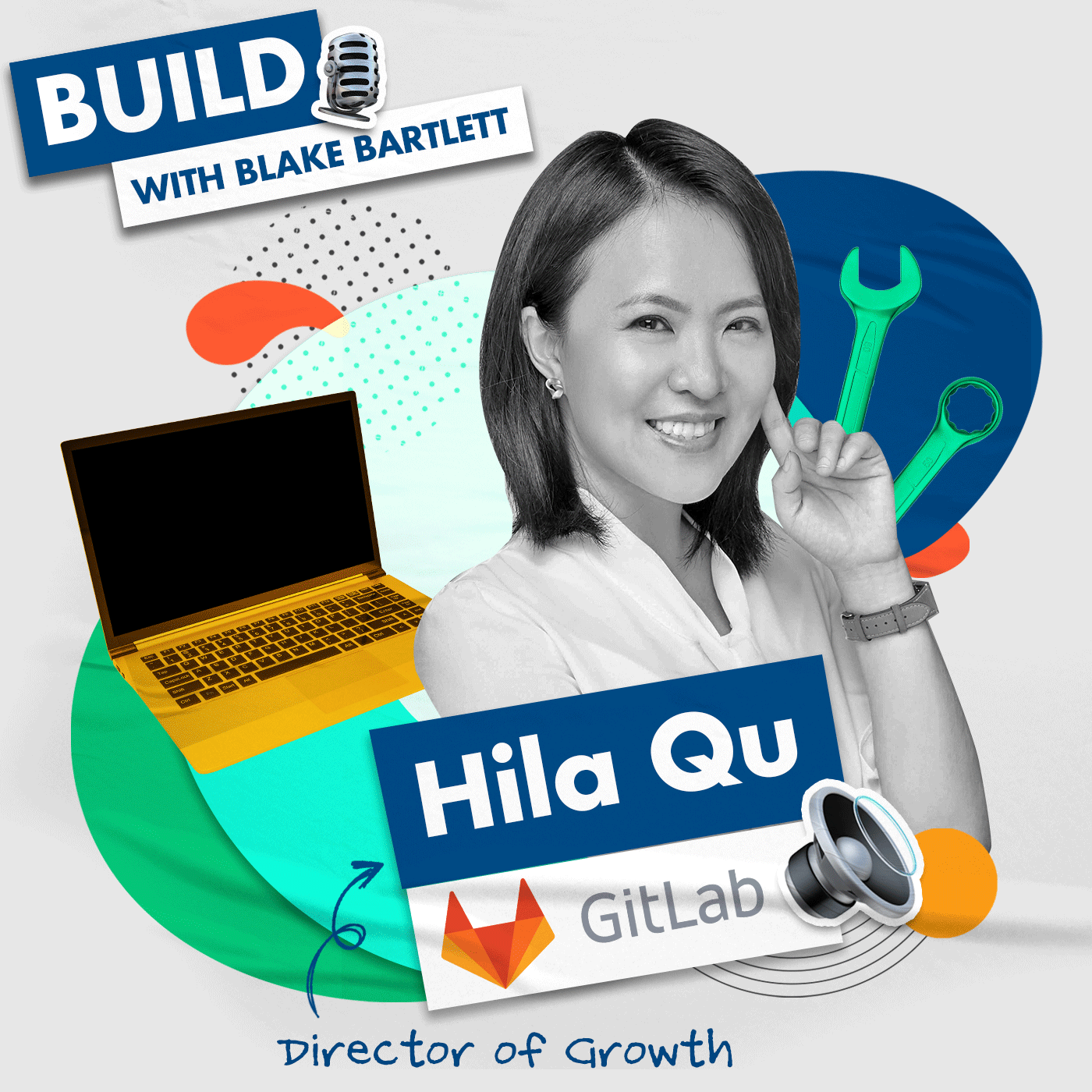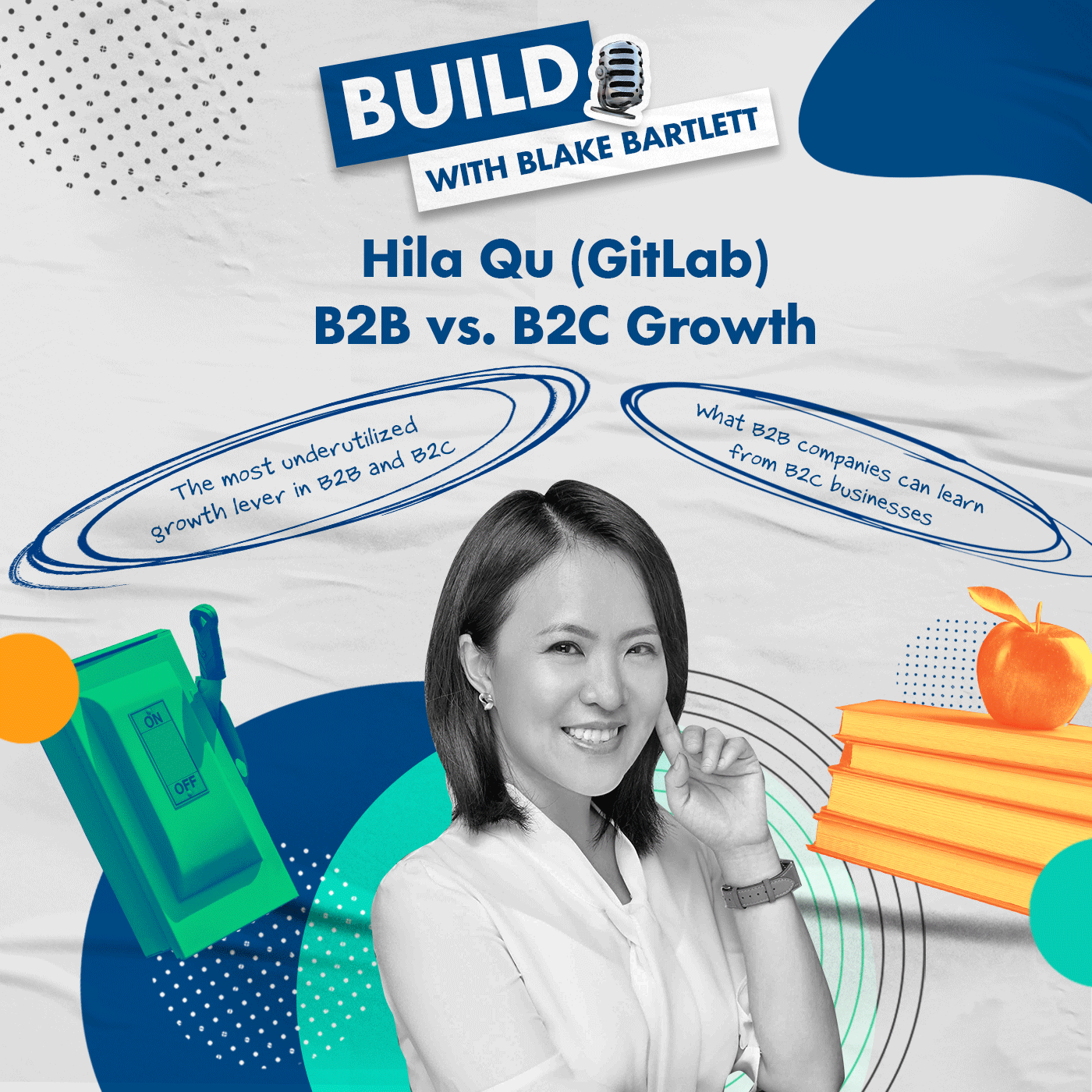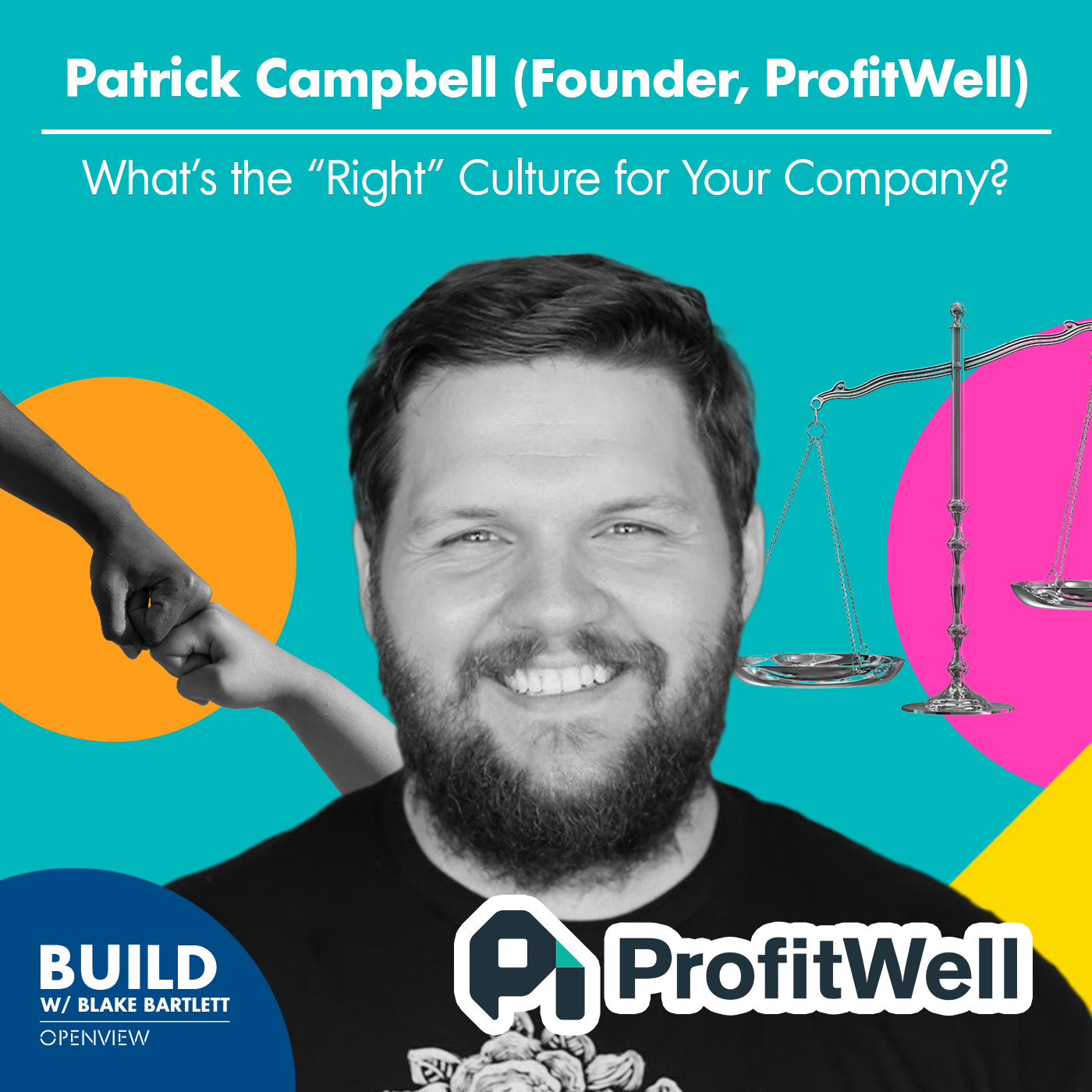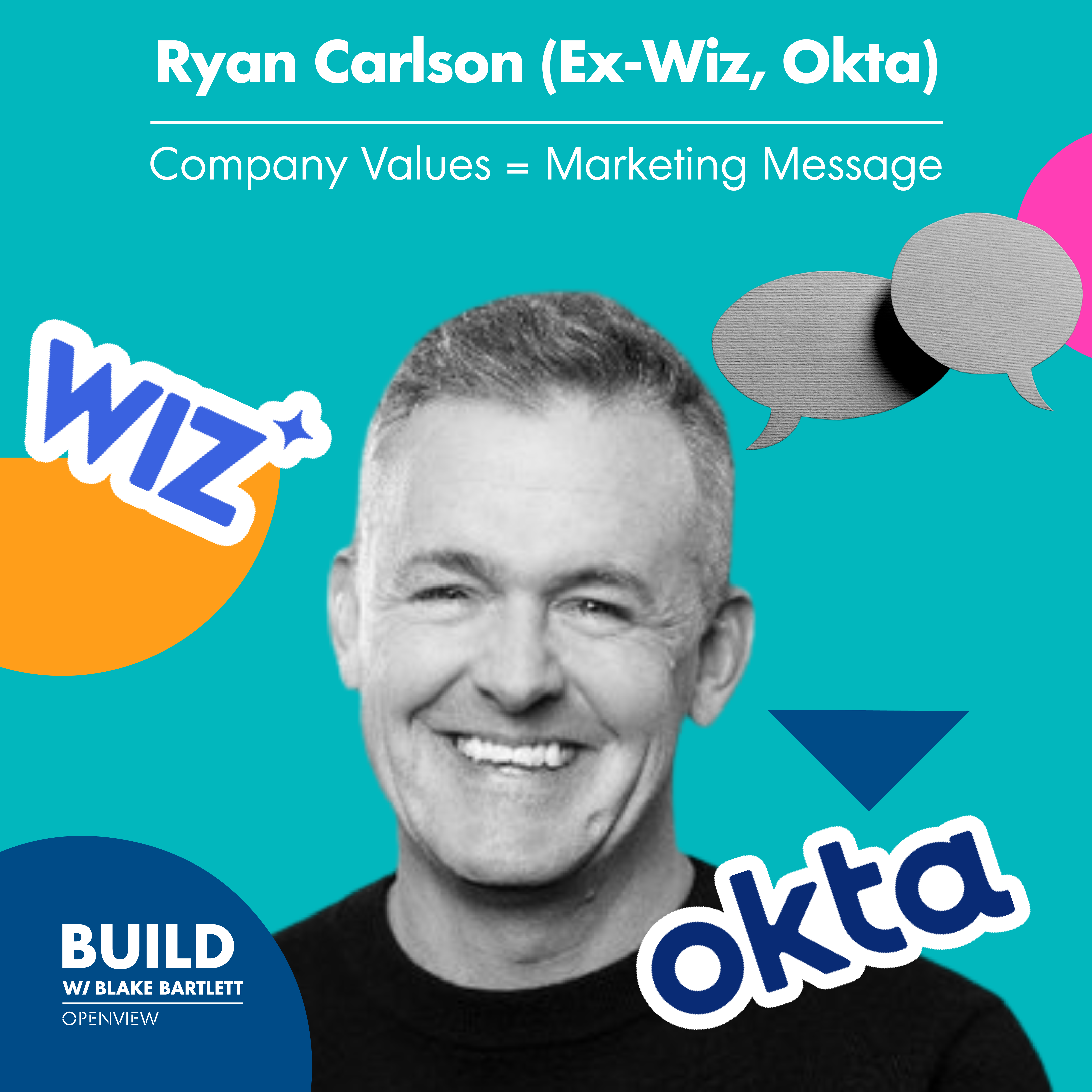Hila Qu (GitLab): B2B vs. B2C Growth
- 0.5
- 1
- 1.25
- 1.5
- 1.75
- 2
Hila Qu: Before Acorns, I was a company called Growth Hackers. I learned growth from Sean Ellis. And first thing I learned from him is that if you have 10 developers in your team, put five in developing new products, put the rest five on new user activation. Because if that doesn't work, whatever cool features you build doesn't matter, right?
Blake Bartlett: Welcome back to the BUILD podcast. I'm Blake Bartlett, a partner at OpenView. The world of SaaS is always evolving and we're here to help you adapt, compete, and win with your startup. The build podcast brings you stories and insights from my conversations with the most successful people in SaaS. In today's episode, I chat with Hila Qu director of growth at Gitlab. Hila is a uniquely talented later in today's most in demand function, growth. And what makes her so unique is that she has led growth functions in both B2C and B2B contexts. There are many similarities, but also many differences. And one thing is clear today, B2B is taking its cues from B2C best practices. And this is because the PLG movement is taking over the SaaS world. In this episode, we talk about conversion, retention, and the pivotal role of data in all aspects of growth. All that and more on this episode of BUILD. So let's dive in with Hila Qu. So Hila, thank you so much for joining us here on the BUILD podcast. It's great to have you on the show.
Hila Qu: Thank you so much for having me, Blake. I'm super excited to be here.
Blake Bartlett: So today we're going to be talking about B2C growth versus B2B growth. And now you've personally been in environments where you've done both B2C like at acorns, and B2B at Gitlab. And so there's a lot that we can unpack in terms of the similarities, but also the differences in growth from B2B to B2C. So I think the first and foremost most important thing to talk about is just definitions. I do find that growth is a term that means something different to lots of different people. So maybe to you, what is the definitional differences in growth from B2B to B2C? Are we talking about the same thing? Are we talking about different things, here?
Hila Qu: Yeah. Yeah. I have been doing growth in both B2C and B2B. And part of the reason I transitioned from B2C and B2B is for my own curiosity. I want to answer those questions. I think one big difference is the goals for B2B and B2C growth are definitely different. I find B2C companies typically focus more on user growth. For example, at Acorns, our north star metric is monthly investing users or some sort of active user metric. B2B definitely focuses a lot more on revenue, ARR, paid customers. inaudible we have a north star metric as ARR or ARR growth. So I think that is the biggest difference I see, but I also saw some other differences in terms of when the teams are definitely there, they are different. At Acorns, I manage the entire growth team. I was a VP of growth. So my team includes user acquisition, sale, and marketing. Those are the more marketing- focused teams. I also manage growth product team and together we own this user growth quota to drive active user, right? For B2B, the growth teams are much more broader. Traditional, like the sales teams, the B2B marketing teams, customer success teams, that is already there when I joined Gitlab. And I was kind of starting this new product- led growth team within the product organization. And we kind of own part of the revenue growth, not the sales quota, but kind of the self- service product- led revenue growth funnel. So I find that very different as well.
Blake Bartlett: So it sounds like one of the biggest things there is that growth in a B2B context is just much more cross- functional and multidisciplinary.
Hila Qu: Yeah. Yeah, definitely. I think it's, like for B2B, sales- led growth and product- led growth are kind of the two main funnels. And in fact, the sales ones have been there for a very long time. So a lot of times the product led growth funnel is a new funnel a B2B company wants to build. And it has to kind of collaborate and fit into the original org structure, the funnel structure, the infrastructure, and all of that.
Blake Bartlett: So now that we have the definitions and some of the goals defined, I think that an interesting way to unpack B2B versus B2C growth is just to go down the funnel. So the logical place to start is with acquisition. So how is user acquisition similar and different from B2C growth to B2B growth? What do you see there?
Hila Qu: Yeah, I think first of all, in B2C, we call it user acquisition. I don't think in B2B. I was trying to find that team or find that function within B2B. Nope, there is no such thing as user acquisition in most B2B companies. I think we call it user acquisition in B2C because it's very direct. The funnel is really short. But for B2B, that is a much longer cycle. Like, you go through evaluation, you go through negotiation, it can be months or even year sometimes. So that is a very different funnel, which lead to very different teams and tactics in acquisition. So for B2C, there are typically three kind of channels. For example, Acorns we have paid as like a big part. That's the same for most B2C companies. We have referral and we have organic. And I would say that is pretty much pretty standard nowadays for most apps. But for B2B, I think paid marketing is a much smaller, I would say kind of components, in terms of overall success. Instead, you have to do a lot of more, I call them slow and steady channels. Contents, conference, webinars, community building is much slower. You need to put in a lot of work. But once they are established, it's harder to change as well. Like, you get the benefit from those channels over time. And ultimately you want to build yourself as the thought leader in that space for whatever solution you are trying to provide. And the trust is there, the customers will follow.
Blake Bartlett: Yeah. Yeah, definitely. And so moving from acquisition, then to, activation. So you've gotten the user, now how do you activate them? How is that different in B2C versus B2B?
Hila Qu: Yeah. Activation is definitely my favorite topic. I learned that, I remember when I joined... Before Acorns, I was a company called Growth Hackers. I learned growth from Sean Ellis. And first thing I learned from him is that if you have 10 developers in your team, put five in developing new products, put the rest five on new user activation. Because if that doesn't work, whatever cool features you build doesn't matter, right? Nobody's going to use them. And I just take that into my heart. For B2C product, again, activation is about user activation. The unit there is user, right? And you typically have a very short period of time, like even a few hours in a day to get new users to their aha moments. So going into Gitlab and B2B, and this is a area I know that has a lot of potential opportunity, but the more I work on B2B activation, I realized that it is much more complex. So B2C, I would say has one aha moment. Most users has very similar journey. You want to get them there. For B2B, I think I began to realize there are at least four types of aha moments. So there is the user aha moment, which is very similar. Like for Gitlab, as an example, a individual user stumbled upon Gitlab, finished some basic setups, and maybe committed the first cide. For a set of code, right? That's like, wow, I solve a problem. And this is useful. This product feature function is useful. That's kind of user aha moment, but that's not enough, right? For most B2B products, there's a team element. It's about collaboration. So maybe this user invite three of his team members. They all joined Gitlab. They begin to collaborate, then merge kind of some changes. They release a piece of code. That's like, wow, we can collaborate on this. We can save time. We don't need to do multiple things in multiple places next time. That's the teams aha moment. But from there, they are still free. They're still using the free product. They haven't paid anything, right? They may realize, wow, this is really good and we want to talk with our engineer manager or CTO to pitch. Like, maybe we should buy this? Even though it costs money, but it saves time. They basically become this internal champion, they pitch, and a decision buyer need to reach some sort of aha moment as well. Maybe it's based on ROI, comparison of different services. The feature of our choice just much better or any things like that. He needs to reach that moment of saying like, wow, this is maybe worth the money. I should give it a try. And from there they become a paid customer. They paid the money. Now they need to make sure the money is worth spending here. So the paid customers aha moment is really when they're paying the money, they begin to use the paid features. They're like, wow, there is a difference between the free version and this one and the money we spent is right, here. So it is definitely a much longer journey and many people are involved in that process. Much more complex, much more fun than B2C activation.
Blake Bartlett: So what I'm hearing from that is, don't be so quick to declare victory and say we have activated this user.
Hila Qu: Yes.
Blake Bartlett: Because there are so many different steps that you're taking in B2B, and there's so many different constituents, and it's a more complex customer journey that you kind of need to have this, almost a slightly paranoid mindset, of you're always, in a sales led environment, you would say always be selling, always be closing.
Hila Qu: I would say maybe always be activating or always be onboarding.
Blake Bartlett: I like that a lot. So always be activating, always be onboarding. I think that's a good mindset, especially in growth and especially in B2B where things are more complicated.
Hila Qu: Yeah.
Blake Bartlett: So we've now talked about acquisition, we've talked about activation. So next in the journey is conversion. How is conversion similar and different in B2C versus B2B?
Hila Qu: Yeah, I think conversion is definitely very different. We talk about B2C is really about self- service conversion for the most part, right? You don't have sales team and the customers are doing the purchase, doing the signing- up for a paid plan themselves in product, for the most part. But in B2B, sales plays a huge role and the deals are larger. The revenue from sales are typically much bigger as well. But I do see the self- service conversion, the B2B self- service conversion, is becoming more and more popular with the product- led growth approach. In the big companies, there are multiple teams and each team a lot of times have their own budget and they will test out their own tools. They will buy their own tools, directly, as well. And a lot of actually companies I've helped with, they monitor the different dots in the same company. And when there are enough dots, they begin to connect them. Through data, through sales, through kind of different approach because they know they can make much bigger deal then.
Blake Bartlett: So could you say a little bit more about that? When you start to see a lot of different dots, or in this case, a lot of different users or pockets of usage within an organization, there's a point at which you say, okay, now is the time for us to connect these dots. And you can do it, as you said, with data or with sales. What does that look like? How do you sort of connect those dots and what are some tactics you've seen be successful there?
Hila Qu: For example, there was a company I talked with, they sell some sort of developer facing tools like API and things like that, right? And they definitely make sure they get data captured when a particular user or a team are using their product. First of all, recognize that is happening. They are the data they captured. And they route that to their sales team, so the sales team can evaluate whether they have an opportunity to closing this as a bigger deal. Because each team is using and is paying, maybe using a very basic plan, but they can kind of combine them together, pitch a bigger deal to the company.
Blake Bartlett: Okay. Got it. And then when we're talking about conversion, that obviously brings up monetization and pricing. What are some of the biggest similarities and differences you see there?
Hila Qu: Yeah, I think I would say B2B monetization and pricing are much more complex because SaaS product features are virtual, right? You develop those features to solve a problem. How do you put a price around that and how do you combine different things? You have actually a lot of flexibility to innovate, to experiment there. And you have a lot of power to kind of price your product as well, if you can really solve your customer's product. So I think there's a lot of sophistication in there, but I do see more B2C products move into subscription models as well. Like Acorns we used this subscription model, we have different tiers that you can pay for. I think with that, there are more rooms for companies to be testing, innovating there as well. I would say based on my experience and observation, pricing and monetization probably is the most undervalued and underutilized growth lever in both B2B and B2C. It just felt like there are tremendous opportunity there.
Blake Bartlett: So rounding it out then, bringing it to the final stage of the funnel. At least our high level funnel here. Retention and expansion, what are some of the biggest similarities and differences you see here?
Hila Qu: Yeah, I think for B2C retention, my personal experience is that product itself is a big retention lever. At Acorns we did a lot of things to just remove frictions from users to use the product. Like we have different investment features, recurring investment, roundup investment. A lot of users are not using them. Then how can you expect them to retain? They are not even getting the value, right? So we did a lot of experiments to get them to use the product. And that is the biggest retention success we had. The other thing, of course, over time, we also viewed in kind of new use cases that our higher frequency use cases like debit card and people logging much more frequently to checking their transactions, that becomes a natural retention lever as well. So I think product is actually a big retention lever in B2C and channel is another big retention lever. I would say that the channels like emails, push SMS, those are pretty common company use in B2C product and very well utilized. And compared to B2B, I would say that the product is also a pretty important lever in B2B. You want to develop awesome features that solve users problems, but you also want to drive usage as well. I think that's a common neglected area or mistakes people believe. We build the features that customers ask for. And that's it, that's the end of story. But if you look at data a little bit closely, you will begin to realize that maybe half of the features are not used at all by your customers, right? So driving usage is a big opportunity. I think set of integrations is another opportunity and I think it's something different I observe in B2B, for sure. Usually a lot of the B2B tools have integrations with other B2B tools. If you can drive users to set them up early on, it's a big retention lever. And the more you can view your own product as a platform, as kind of the system of record versus point solution they use, especially in the collaboration type of workplace tools, I think the higher chance you can retain your customers for longer. I think those are the bigger ones. And I think the last one I would say I observe is definitely data. I definitely experienced myself there is a huge difference in terms of data situation in B2C and B2B, which is key to retention.
Blake Bartlett: So in closing, we've gone through our funnel now and we've talked about everything from acquisition to retention and everything in between. If you kind of look out into the future now and say, all right, next five years, what does B2B growth look like? How does it start to look more and more like B2C growth? What are some of the biggest things you expect to see come into the ecosystem of B2B growth over the next few years?
Hila Qu: Yeah, I think the first one is definitely breaking the data silos and really build a truly 360 customer data view and full funnel view. Like when I say full funnel, is really kind of from marketing data, the marketing source, which channel this customer come from, the demographic information, external third party data, product usage, and email engagement, in- app behavior, all of that linked together. I think that, with tools such as segment and others, it is easy to get that in B2C right now. But it is tremendously hard to get that in B2B and there is a lot of gaps. And when you don't have that level of data, your power as a growth person is limited because growth is deep down is really about using data to find insights, using insights to inform experiment, and using experiments to drive different behaviors. But I do see that happening. A lot of startups are developing all sorts of tools for B2B inaudible people, which is awesome. I think the second thing is the tempo of iteration and experimentation. I definitely say that the tempo of experimentation is much higher in B2C. There are the reasons, right? B2C products has larger sample size and the decision time is quicker. The funnel is shorter. You can do that type of quick feedback. But I think with product- led growth, many B2B companies can accelerate the rate there, or maybe the companies who will accelerate first will have a unique advantage. They will grow faster because they learn faster. They iterate faster. The third thing I would say, maybe kind of borrow some off the fun factor from B2C to B2B. That kind of attention to users is actually very... Is something B2B companies can learn. Because a lot of times we tend to think about like maybe focus too much on companies or decision- makers and less on users and that. Yeah, and I do see, there is one thing that B2C companies that is learning from B2B as well, that is putting more human interaction in the user's journey. Because B2C has been always about automation. Automation, a hundred percent. Never have a person too involved directly with users because there's not enough value there. But companies like Superhuman and some others, they're adding the human element into the onboarding flow or the interaction flow. Very similar to customer success team in B2B. And it's cutting the noise. It's kind of standing out because no other B2C companies is doing that. So I felt like there probably are things like B2C and B2B can learn from each other.
Blake Bartlett: So in closing, for the B2B growth people listening right now, more data, more fun, but don't lose the human touch. Right?
Hila Qu: Yeah.
Blake Bartlett: That's the summary.
Hila Qu: Yeah.
Blake Bartlett: Perfect. Awesome. Well, Hila, thank you so much for taking the time with us today on the BUILD podcast. It was great to have you on the show.
Hila Qu: Thank you for having me. Bye.
Blake Bartlett: Thanks for listening to this episode of build. If you like what you've heard, leave us a review on Apple podcasts and subscribe to stay up to date with all the new episodes. Want more insights from OpenView? Follow me, Blake Bartlett, on LinkedIn for daily PLG content. And head to our website to sign up for our weekly newsletter.
DESCRIPTION
Key Takeaways:
[2:19] What are the definitional differences in growth from B2B to B2C?
[4:17] Hila explains how growth in a B2B context is much more cross-functional and multidisciplinary than B2C.
[5:06] How is user acquisition similar and different from B2C growth to B2B growth?
[6:48] Once you have gotten the user, how do you activate them? How is that different in B2C versus B2B?
[11:06] How is conversion similar and different in B2C versus B2B?
[13:23] Hila talks about the biggest similarities and differences in conversion, monetization, and pricing.
[14:43] What are some of the biggest similarities and differences in retention and expansion?
[17:30] What are some of the biggest things Hila expects to see come into the ecosystem of B2B growth over the next few years?
Mentioned in this episode:
Featuring Hila Qu, Director of Growth at GitLab.
Follow Blake Bartlett on Linkedin.
Podcast produced by OpenView.
View our blog for more context/inspiration.
Today's Host

Blake Bartlett
Today's Guests







